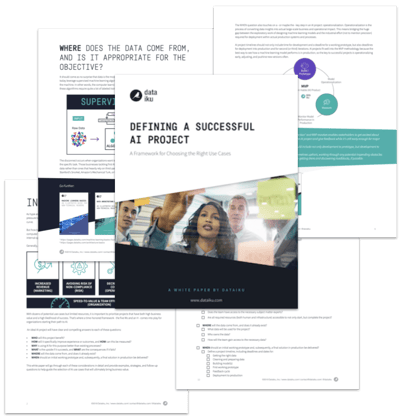As companies around the world look to get a jump on AI efforts, there’s one major question: with dozens of potential AI use cases but limited resources, how can organizations prioritize the right projects?

The key to leading successful initial AI projects is choosing use cases that:
- Have high business value and
- Have a high likelihood of success.
Note that this primarily applies to an organization’s first efforts in AI, not necessarily all future AI projects. Why? Because not properly quantifying potential AI use cases with the right questions up front puts executive sponsorship for future endeavors at risk - it is critical to be able to measure expected lift and make an impact in order to instill trust in the initiative and secure support for future initiatives.
A Framework for Choosing an AI Project
An ideal AI project will have clear and compelling answers to each of these questions:
- WHO will this project benefit?
- HOW will it specifically improve experience or outcomes, and HOW can this be measured?
- WHY is using AI for this purpose better than existing processes?
- WHAT is the upside if it succeeds, and WHAT are the consequences if it fails?
- WHERE will the data come from, and does it already exist?
- WHEN should an initial working prototype and, subsequently, a final solution in production be delivered?
Ultimately, defining each of these questions requires one underlying strategy: collaboration. That is, the only way to really define AI projects before getting started in a way that will make them successful is to involve everyone, from the business to IT and those in between. Communicating on what the stakes are, current processes, deliverables, timeline, etc.: these important components cannot simply be decided on and dictated from a data scientist or even a larger data team alone.






